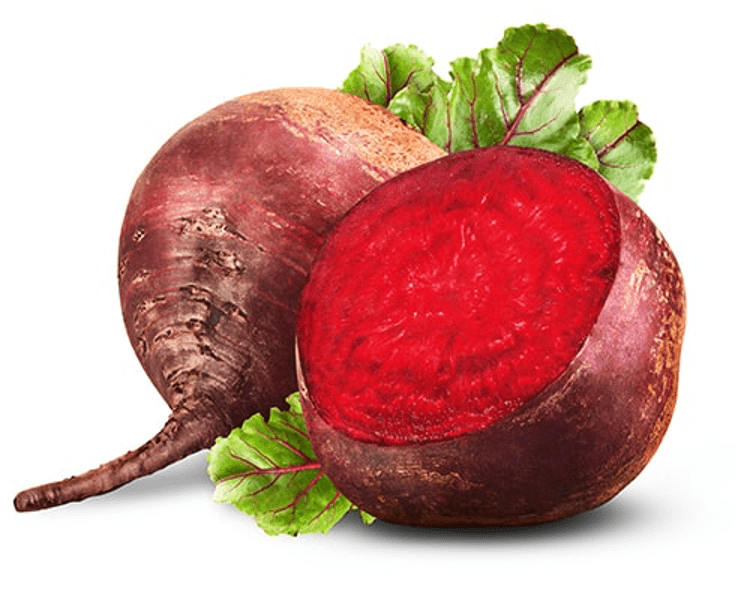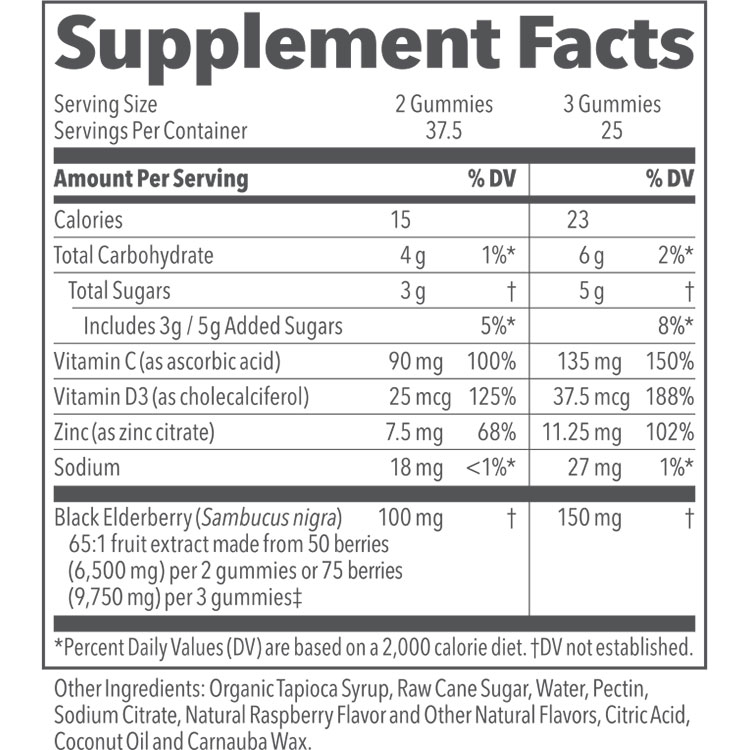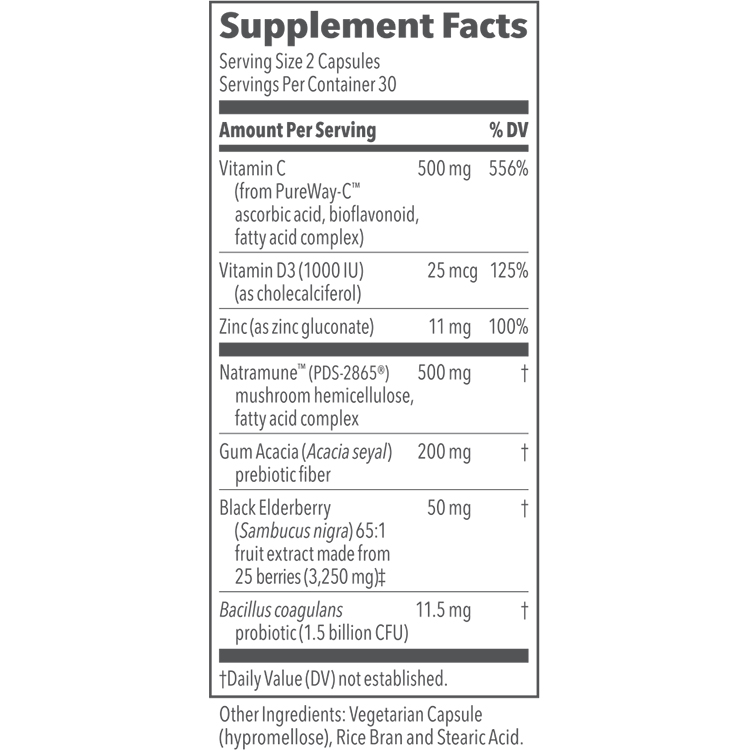BACKGROUND
Ingredient type: Botanical
Also Known As: Beta vulgaris, Beetroot, Garden beet, Table beet, Blood turnip, Beet root

The modern garden beet originated from a wild Mediterranean plant known as the sea beet. This wild ancestor had taproots that were relatively small compared to those of the garden beet and was probably originally valued by ancient peoples primarily for its edible leaves. Although there is some evidence that ancient cultures ate wild beet roots, root use likely didn’t become common until after the Greeks began cultivating the beet around 300 BC (1,2).
Most of what is written about beet roots by the ancient Greeks relates to their use as a medicine. The Herbarium of Crateuas, written around 100 BC, claims that beet juice was useful to: clear the head, reduce ear pain, fight dandruff, and ease the pain of the chilblains (3). First century authors like Dioscorides and Pliny the Elder also wrote about a plethora of purported medicinal uses for beet roots. It actually wasn’t until sometime in the 16 century that Europeans started valuing beet root more for its culinary virtues (2). By that time significant selective breeding of beet plants had given rise to varieties that were more similar to those that we are accustomed to today (4). Continued intense breeding between in the 1700’s and 1800’s was responsible for production of our modern garden beet, sugar beet, swiss chard, and fodderbeet cultivars (2).
In recent years beet roots have garnered scientific interest as potential “functional foods”. Research over the past decade has shown that beets are a good source of folate, manganese, potassium, iron, vitamin C and fiber (5). It’s also been revealed that these roots contain high levels of unique bioactive compounds (e.g. inorganic nitrate, betaine, and betalains) that may be beneficial for managing cardiovascular health and reducing chronic inflammation (6).
TRADITIONAL USES
In addition to being used as recommended by Crateuas in the Herbarium, beet root was also used by the ancient Greeks and Romans as an aphrodisiac or a laxative, to treat digestive issues and fevers, to relieve headaches, and to detoxify the blood (1,3,7). A modern writer familiar with the topic, however, stated that “not everyone in the Roman world was convinced of [the beet roots benefits]. The influential physician Claudius Galen and Oribasius, the court physician to Julian the Apostate were notable sceptics” (7). Even without unanimous agreement on its medicinal effectiveness, the beet root continued to be used to treat a variety of digestive ailments and illnesses of the blood throughout the middle ages (3,8). While it’s hailed by some today as a “cure-all”, it is clear that there are only a few traditional medicinal uses for beet root that have been consistent throughout time. These are:
- To detoxify the blood and cleanse the kidneys and liver
- To treat digestive issues (1,7)
WHAT DOES SCIENCE TELL US?
Beet Root Probably Lowers Blood Pressure:
A 2017 meta-analysis was done on 22 randomized, placebo-controlled, clinical trials to analyze the effect of orally administered beetroot juice on blood pressure. The analysis revealed that beetroot-juice supplemented groups consistently have systolic and diastolic blood pressures that are lower than placebo groups. The authors also performed subgroup analyses which revealed correlations between the size of beetroot’s blood-pressure-lowering effect and duration of supplementation, dosing, and the initial health of the subjects. They observed that beetroot-associated blood pressure reduction was greatest in studies that lasted longer than 14 days, that administered higher vs. lower doses (500ml/d vs. 140ml/d), and that tested nonhealthy vs. healthy participants. They also pointed out that the comparative effect of beetroot juice on blood pressure was reported to be weaker in trials that used nitrate-depleted beetroot juice as their placebo. This indicates that beetroot exerts some of its beneficial effects via bioactives other than nitrate (9).
Even More:
Coming soon
SAFETY
Beet root is likely safe for most people when used in amounts commonly found in foods (“high level of reliable clinical evidence showing its safe use when used appropriately”) and possibly safe for most people when used for medicinal purposes (“some clinical evidence showing its safe use when used appropriately; but evidence is limited”) (10)
Interactions:
- None reported (10)
Side-Effects:
- Some people cannot metabolize the betalain pigments found in beet roots. When these people consume beet roots they may pass red or pink urine. This condition, called “beeturia,” may be alarming but is in fact harmless (1,11).
- Beet roots contain oxalates, which can exacerbate kidney stones. Because beet roots “also contain a high ratio of minerals to oxalates, the amount of bioavailable [oxalates] may be lower than foods with similar oxalic contents” (1).
- Because beet roots may lower blood pressure, caution should be taken by those with hypotension (11).
REFERENCES
- Food as medicine: beets (Beta vulgaris, Chenopodiaceae). American Botanical Council HerbalEGram. 2016;13(1). http://cms.herbalgram.org/heg/volume13/01January/FoodAsMedicine_Beets.html?ts=1519396632&signature=b7387063fb67feeed78683649bb24117. Accessed February 23, 2018.
- Beta vulgaris. Missouri Botanicall Garden website. http://www.missouribotanicalgarden.org/PlantFinder/PlantFinderDetails.aspx?kempercode=a668. Accessed February 23, 2018.
- Biancardi E, Panella LW, and Lewellen RT. Beta maritima: the origin of beets. Springer Science & Business Media. 2011.
- The history of beets. Just Beet It website. http://www.justbeetit.com/history/. Accessed February 23, 2018.
- Basic report on raw beets. USDA’s National Nutrient Database for Standard Reference Release 28. Accessed February 23, 2018
- Clifford T, Howatson G, West DJ, and Stevenson EJ. The potential benefits of red beetroot supplementation in health and disease. Nutrients. 2015;7(4):2801-2822. doi:10.3390/nu7042801.
- Nottingham S. Beetroot. 2004. http://www.lchr.org/a/51/3z/beetroot2.html#ancient. Accessed February 23, 2018.
- New World Encyclopedia contributors. Beet. The New World Encyclopedia. 2013. http://www.newworldencyclopedia.org/entry/Beet. Accessed February 23, 2018.
- Bahadoran Z, Mirmiran P, Kabir A, Azizi F, and Ghasemi A. The nitrate-independent blood pressure-lowering effect of beetroot juice: a systematic review and meta-analysis. Adv Nutr. 2017;8:830-838. doi:10.3945/an.117.016717.
- Monograph on Beet. Natural medicines comprehensive database. http://naturaldatabase.therapeuticresearch.com/nd/Search.aspx?cs=&s=ND&pt=100&id=306&ds=. Accessed February 26, 2018.
- Beet Root. Examine.com article. https://examine.com/supplements/beet-root/. Accessed February 26, 2018.
PRODUCTS THAT CONTAIN THIS INGREDIENT
See the Examine.com entry for beet root or the WebMD entry for beet for more information.




